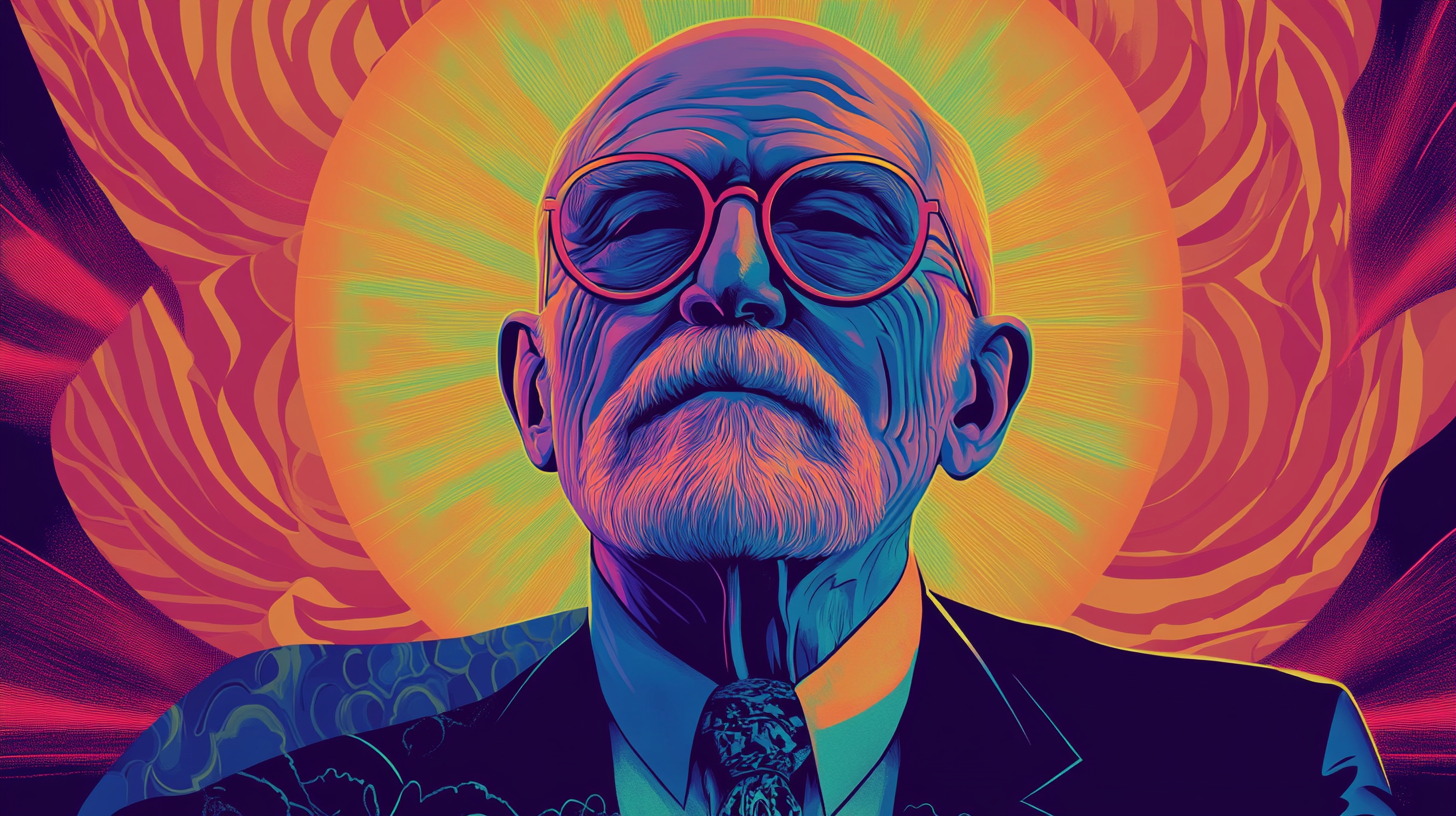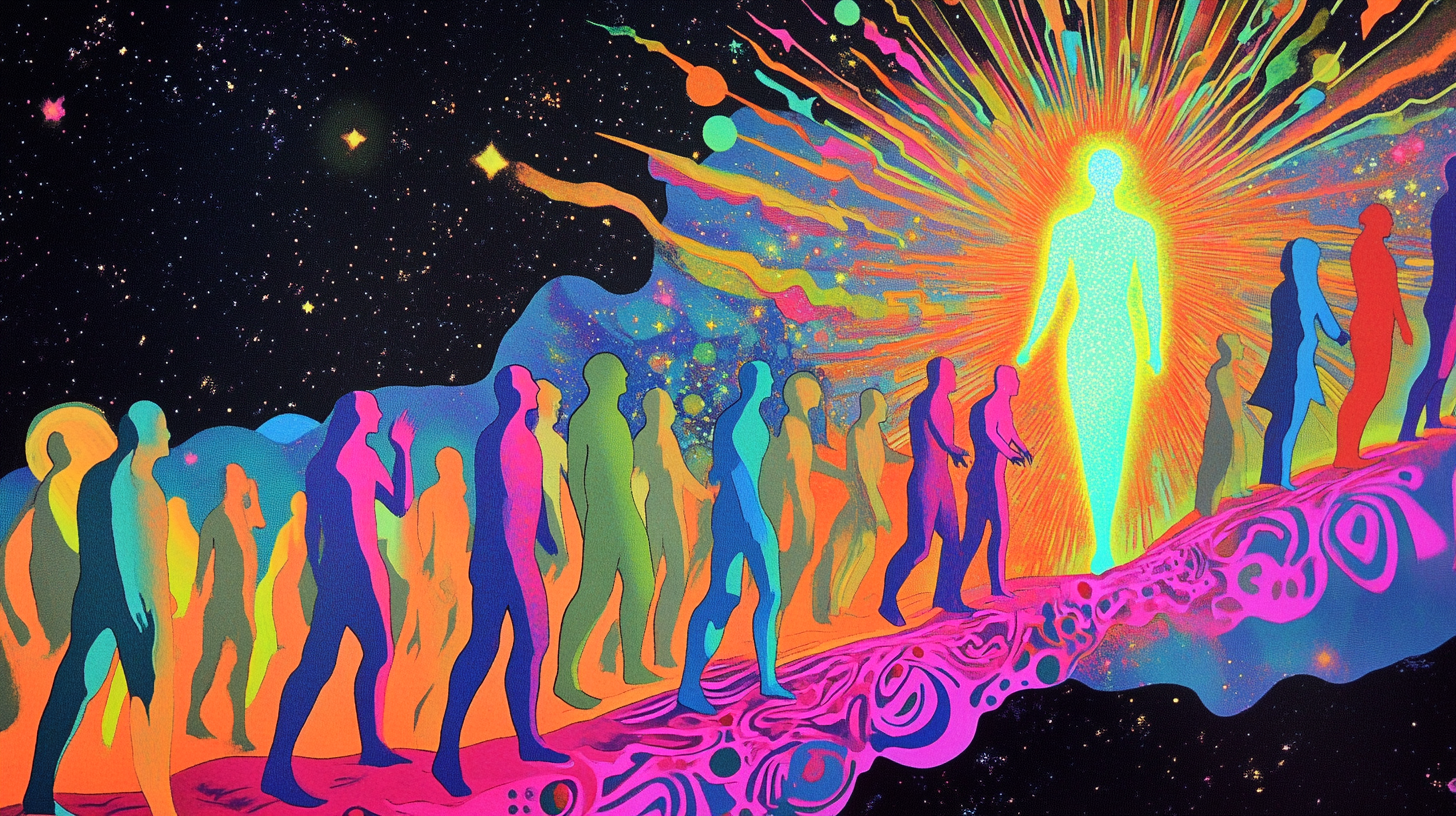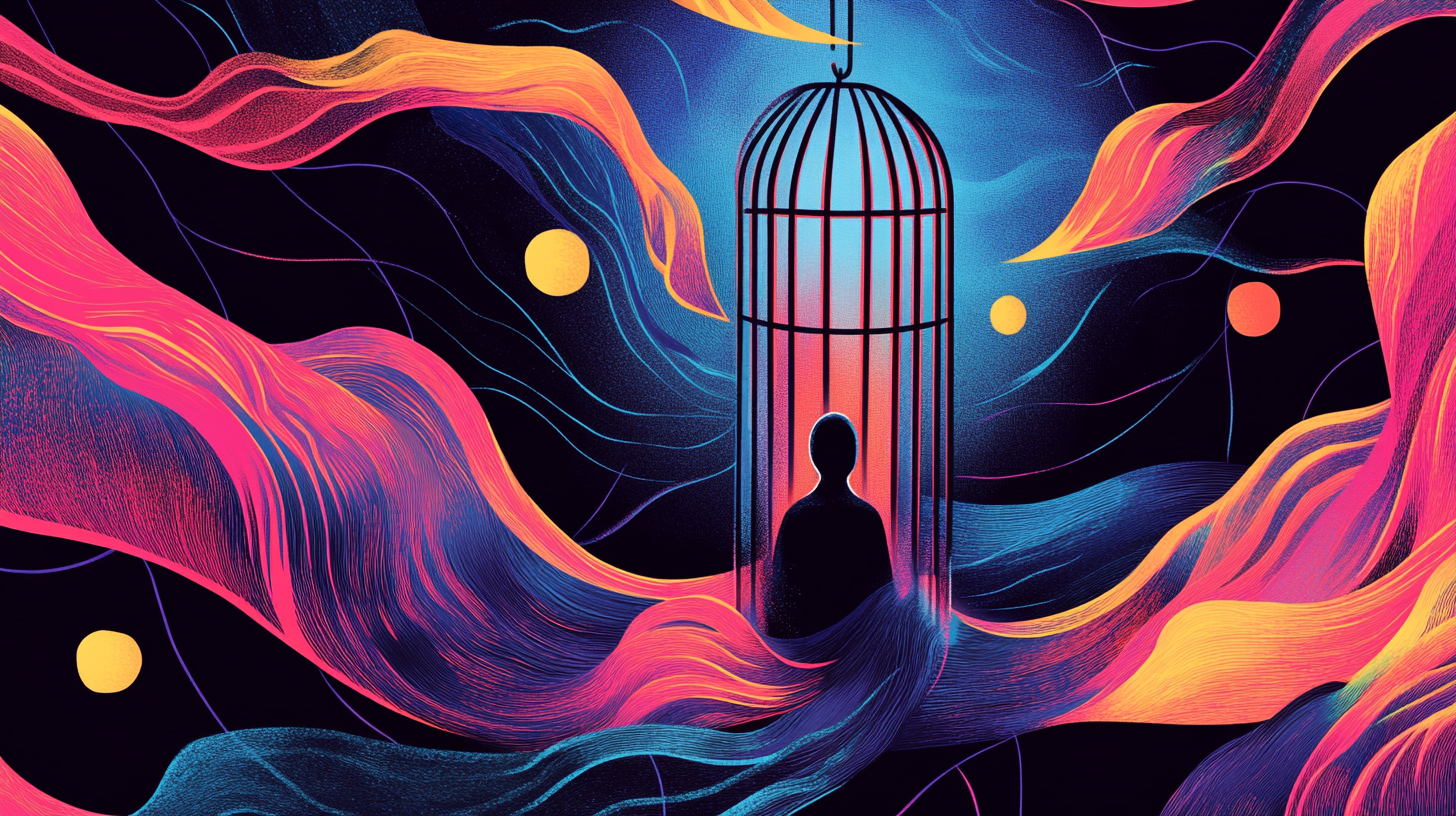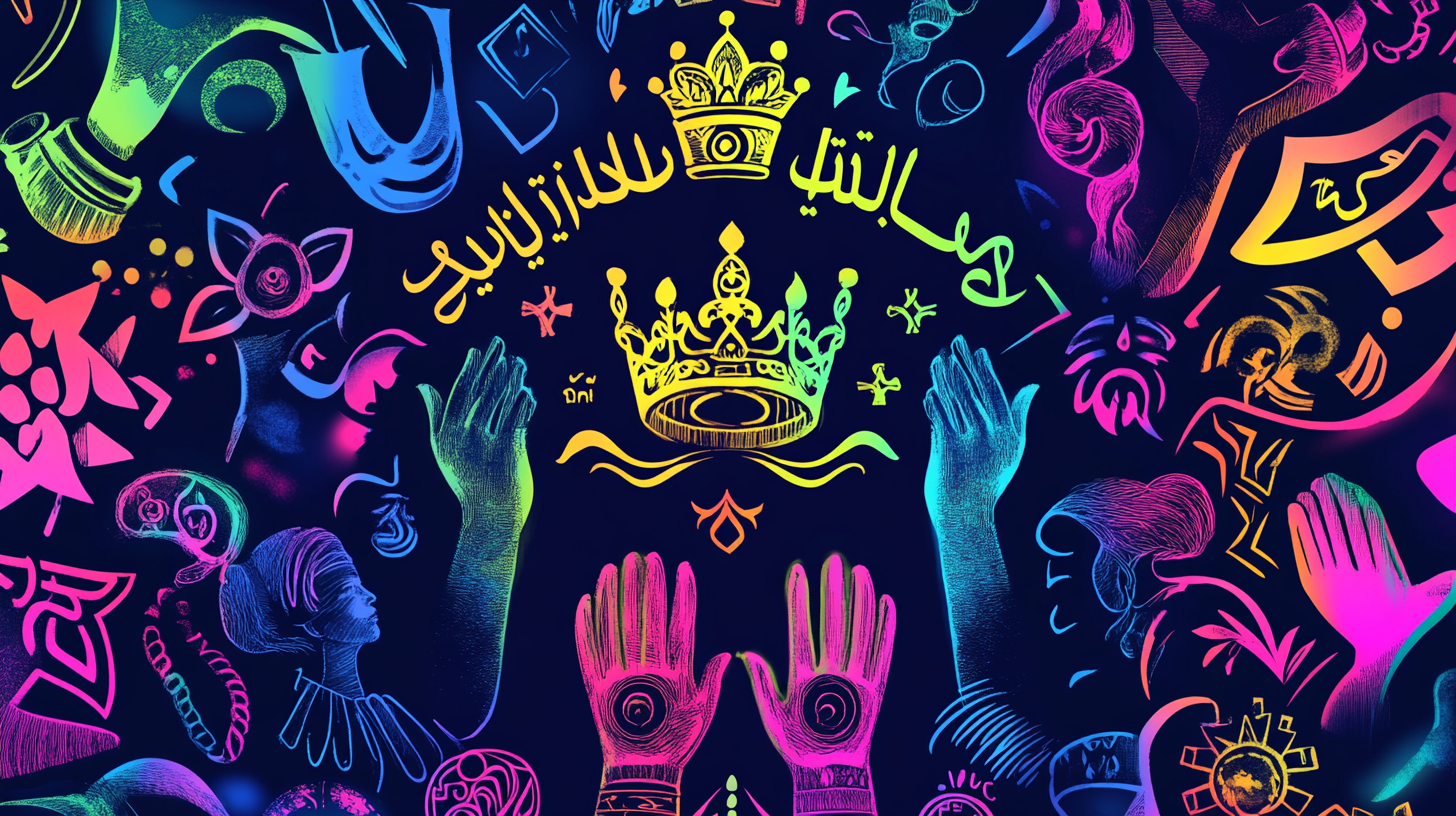Archetypes, Human Evolution, Consciousness, and Names of God

Introduction
The journey of human evolution is intricately linked with the development of consciousness, a process that has shaped our understanding of the world and ourselves. As we evolved, so did our awareness, leading to the emergence of complex psychological constructs known as archetypes. They deeply embedded within the human psyche, play a crucial role in influencing human behavior and personality.
Archetypes, as proposed by Carl Jung, represent universal themes and instinctive patterns that reside in the collective unconscious. They are primordial images that manifest in various aspects of life, guiding our actions, thoughts, and emotions. Understanding them is essential for exploring the depths of our own psyche and the personal unconscious, as they hold the key to unlocking our true selves.

The significance of archetypes extends beyond psychology, touching upon spiritual and cultural dimensions. By recognizing and balancing different archetypes, individuals can achieve personal growth and self-realization, leading to a harmonious existence.
This article delves into the concept of archetypes, exploring their origins, meanings, and impact on human consciousness and behavior. We will also examine how balancing these archetypes can help in finding win-win solutions and navigating the unintended negative consequences strategy in life.
Join us on a journey through the fascinating world of archetypes, drawing insights from Jungian psychology, religious perspectives, and modern interpretations. This article unravel the mysteries of the human mind and the unconscious mind, aiming to achieve a deeper understanding of ourselves and the world around us.
Introduction to Human Evolution and Consciousness
Human evolution and consciousness are intricately linked, with the development of the human brain and nervous system playing a crucial role in shaping our collective unconscious. As our ancestors evolved, so did their cognitive abilities, leading to the emergence of complex thought processes and self-awareness. This evolutionary journey has profoundly influenced the way we perceive and interact with the world around us.
Carl Jung, a pioneer in analytical psychology, introduced the concept of the collective unconscious—a shared reservoir of archetypes, or universal symbols and images, that reside in the unconscious minds of all humans. They have evolved over millennia, influence humans experience and shape our experiences in profound ways. They are the building blocks of the human psyche, guiding our thoughts, emotions, and actions.

The human psyche is a complex system comprising both the conscious and unconscious mind. The personal unconscious, a concept introduced by Jung, refers to the unique, individual aspects of our unconscious mind shaped by our personal experiences and memories. In contrast, the collective unconscious is a shared, universal aspect of our unconscious mind that contains archetypes common to all humanity.
Understanding human evolution and consciousness is essential for developing effective strategies for personal growth and development. By recognizing the role of the collective unconscious and archetypes in shaping our behavior, we can better navigate our own psyche and develop more effective approaches to finding win-win solutions and avoiding unintended negative consequences. This awareness allows us to tap into the deeper layers of our own psyche, fostering personal growth and self-realization.
Understanding Archetypes
Archetypes are universal symbols and themes that reside in the unconscious mind of the collective, influencing human personality. These inherited ideas serve as templates for understanding the world and ourselves, shaping our thoughts, emotions, and actions. They manifest in various forms, such as characters, situations, or symbols, and are integral to the psychological development of individuals.

By exploring each one, we gain insights into the deeper layers of the human psyche and the personal unconscious, allowing us to connect with our true selves.
Archetypes by Carl Jung
Jung, a pioneer in analytical psychology, introduced the concept of Jungian archetypes, which are deeply embedded in the universal unconscious. He identified major Jungian archetypes, such as the Self, the Shadow, the Anima/Animus, and the Persona, each representing different aspects of the human psyche. These Jungian archetypes serve as guiding forces in our lives, influencing our behaviors, dreams, and even the stories we tell.

For example, the Shadow archetype encompasses the darker, often hidden aspects of our personality, which, when acknowledged, can lead to personal growth and self-awareness. He believed that by understanding and integrating these Jungian archetypes, individuals could achieve self-realization and navigate the complexities of human existence more effectively.
Archetypes by Caroline Myss
Caroline Myss, a renowned author and speaker, offers a unique perspective on archetypes, emphasizing their role in shaping personal growth. She identifies various archetypal patterns that influence our choices, relationships, and life paths. Myss suggests that by recognizing and working with these archetypes, individuals can gain a deeper understanding of their own psyche and the personal unconscious. This awareness allows for greater self-awareness, empowerment, and the ability to overcome challenges by aligning with the archetypal energies that resonate with their true selves. In comparison, the concept of Jungian archetype delves into personality assessment and psychological theory, linking individual archetypes to behaviors and the collective unconscious as defined by Carl Jung.
Archetypes Meaning and Definition
The term "archetype" originates from the Greek word "archetypos," meaning "original pattern" or "model." In psychology, archetypes are considered to be innate, universal prototypes for ideas and may be used to interpret observations. They hold significant implications in both psychology and spirituality, as they bridge the gap between the conscious mind and the collective unconscious.
By exploring the meaning and definition of archetypes, individuals can uncover the hidden influences that shape their personalities and behaviors, leading to a more profound understanding of themselves and the world around them.
The Role of Archetypes
Character archetypes are universal patterns that manifest in our daily lives, influencing our roles and interactions with others. These archetypes, such as the Hero, Mentor, or Trickster, provide us with familiar templates for understanding our behavior and our relationships. By recognizing these character , individuals can gain insights into their own roles and the dynamics within their social circles, leading to more meaningful connections and personal growth.
Archetypes for Women
Women often embody specific archetypes that reflect various aspects of the female psyche and cultural norms. These include the nurturing Mother, the passionate Lover, the fierce Warrior, and the wise Sage. Each archetype offers unique strengths and challenges, shaping a woman's identity and life path. By embracing and balancing these archetypes, women can achieve a more harmonious and empowered existence, aligning with their true selves and navigating societal expectations with confidence.

By embracing and balancing these archetypes, women can achieve a more harmonious and empowered existence, aligning with their true selves and navigating societal expectations with confidence.
Each female archetype embodies both feminine and masculine aspects, creating a dynamic interplay of yin and yang. For instance, the nurturing Mother archetype may incorporate the masculine aspect of protection, while the fierce Warrior archetype can embrace the feminine aspect of compassion.
By recognizing and integrating these masculine aspects, women can harness the full spectrum of their archetypal energies, fostering personal growth and self-realization. This balance of yin and yang within each archetype enables women to navigate life's challenges with resilience and grace.
The Impact of Stagnation: The Dominant Trait In Human Psyche
When individuals become stuck in a single archetype, it can hinder their personal development and lead to stagnation. This limitation restricts their ability to explore other aspects of their personality and achieve self-realization. The necessity of reincarnation, in a metaphorical sense, emphasizes the importance of evolving through different archetypes to foster growth and transformation. By moving beyond a singular identity, individuals can embrace a more dynamic and fulfilling life, enriched by diverse experiences and perspectives.

Stagnation occurs when a dominant archetype takes over, blocking other archetypes from emerging within the conscious mind. This dominance restricts personal development and prevents the exploration of diverse aspects of one’s personality. When the conscious mind is overly influenced by a single archetype, it limits the potential for self-realization and growth. The concept of Jungian archetype highlights how stagnation can occur when individuals fail to integrate various archetypes, such as 'the shadow,' into their conscious awareness.
The necessity of reincarnation, in a metaphorical sense, emphasizes the importance of evolving through different archetypes to foster transformation. By moving beyond a singular identity dominated by one archetype, individuals can embrace a more dynamic and fulfilling life, enriched by diverse experiences and perspectives.
Collective Unconscious
The collective unconscious is a fundamental concept in understanding the depth of the human. It refers to the part of the unconscious mind that is shared among all humans, containing universal themes and archetypal images.
These archetypes are instinctive patterns that manifest in various aspects of life, influencing human reactions and personality development.
The major archetypes within the collective unconscious, such as the Hero, the Shadow, and the Anima/Animus, serve as guiding forces, shaping our thoughts, emotions, and actions.
By exploring these Jungian archetypes, individuals can gain insights into their own psyche, uncovering the hidden influences that drive their behaviors and decisions. This Jungian archetypes' exploration allows for a deeper understanding of oneself and the world, fostering personal growth and self-realization.
Unintended Negative Consequences Strategy
The unintended negative consequences strategy involves recognizing how certain actions, despite good intentions, can lead to unforeseen outcomes. By understanding this strategy, individuals can navigate life’s challenges more effectively, finding win-win solutions that align with their true selves and promote personal growth. Jung suggested that moving between archetypes requires a conscious effort to recognize and integrate the diverse aspects of one’s personality. By using artistic control, individuals can creatively explore and express these different archetypes, allowing for a dynamic interplay of traits. This process encourages self-awareness and personal growth, as individuals learn to navigate the complexities of their own psyche and the collective unconscious. Through this exploration, one can achieve a more balanced and harmonious existence, aligning with their true selves and embracing the full spectrum of human experience. Additionally, understanding the concept of Jungian archetype can help individuals recognize unintended negative consequences by identifying and integrating shadow aspects of their personality.
Duality and Balance in Archetypes
Embracing duality involves the necessity of balancing the dark and light sides of personality traits, an essential aspect of understanding the complexities within the human psyche. This balance allows individuals to navigate their internal world with greater insight and harmony. The concept of duality is deeply rooted in Jungian psychology, where the shadow archetype represents the darker, often hidden aspects of the self. By acknowledging and integrating these shadow elements with the more conscious, positive traits, individuals can achieve a more cohesive and authentic sense of self.

This process not only fosters personal growth but also aligns with spiritual principles, such as those embodied by the Everlasting God, who represents a harmonious blend of justice and compassion. By embracing duality, individuals are better equipped to face life’s challenges, finding strength in the balance of opposing forces and ultimately leading to a more enlightened existence. This concept is closely related to the Jungian archetype, which emphasizes the importance of understanding and integrating various aspects of the self for a balanced and harmonious life.
The Shadow and the Goodie
The shadow archetype, often misunderstood and feared, is an integral part of our soul’s evolution. It embodies the darker, hidden aspects of our personality that we may be reluctant to acknowledge. However, rather than being something to fear, the shadow offers a profound opportunity for growth and transformation.
By bringing the shadow into the light of our conscious awareness, we can begin to understand and integrate these aspects, rather than attempting to delete them from our behavior. This process of embracing the shadow allows us to harness its energy for personal development and self-realization.
Recognizing the shadow as a vital component of our psyche encourages a holistic approach to self-awareness, fostering a more balanced and authentic existence. In doing so, we align with the journey of conscious evolution, transforming the shadow into a source of strength and insight.
Balancing Extremes
In the realm of analytical psychology, balancing extremes involves strategies for transitioning from extreme traits to a more harmonious state of consciousness, allowing for a comprehensive integration of various aspects of the psyche. This process encourages individuals to move beyond rigid personality patterns and embrace a fluidity that fosters personal growth and self-awareness. Additionally, understanding the concept of the Jungian archetype can provide valuable insights into balancing these extremes, as it connects individual traits to broader psychological theories.
Princeton University Press has published extensive research on the subject of balancing extremes within the framework of archetypes and analytical psychology. Their works delve into the intricate dynamics between the conscious and unconscious mind, highlighting how individuals can navigate the complexities of their own psyche.
By exploring the interplay between dominant and suppressed traits, these publications offer insights into achieving psychological equilibrium. This balance is crucial for personal development, as it allows individuals to harness the full spectrum of their archetypal energies, leading to a more integrated and authentic existence.
Through scholarly exploration, Princeton University Press contributes to a deeper understanding of how balancing extremes can facilitate transformation in the context of human consciousness.
Religious Perspectives on Archetypes: Names of God
The exploration of the various names of God across different religious traditions reveals their profound connection to archetypes. These names symbolize universal themes and aspects of the divine that resonate deeply within the human psyche. For instance, in Christianity, names like “El Shaddai” and “El Elyon” reflect archetypal images of power and transcendence, guiding believers in their spiritual and psychological development.

Similarly, the Hebrew word “Elohim” embodies the collective unconscious, representing the multiplicity of God’s attributes and their influence on human consciousness. Additionally, the concept of the Jungian archetype provides a psychological framework for understanding these religious perspectives, linking them to broader human behavior and cultural norms.
99 Names of Allah in English
The 99 names of Allah, known as Asma’ul Husna in Arabic, offer an intricate analysis of the dualities present within the divine nature. Each name signifies a specific archetype, such as “Al-Rahman” (The Merciful) and “Al-Jabbar” (The Compeller), which highlight the balance between mercy and justice.

These names serve as a guide for personal growth, encouraging individuals to embody these divine qualities and integrate them into their own psyche, fostering a harmonious existence. This concept can be related to the Jungian archetype, where each name represents a facet of the collective unconscious as defined by Carl Jung.
72 Names of God in Hebrew
The 72 names of God in Hebrew hold significant spiritual and psychological meaning, offering a pathway to balance the psyche. These names are considered primordial images that connect individuals to the divine essence, facilitating self-realization and personal transformation.
By meditating on these names, individuals can tap into the archetypal energies they represent, aligning with their true selves and achieving a deeper understanding of their own consciousness. Examples of these names, as referenced in the Old Testament, include "El Shaddai," "El Elyon," and "El Olam," each serving as a social mask that reveals various aspects of the divine.
The collected works on these names, published by Cambridge University Press, delve into their profound impact on the collective unconscious and human psyche. By engaging with these 72 names, individuals can transcend cultural norms and explore the depths of their own consciousness, ultimately finding win-win solutions in their spiritual and psychological journey.
Names of God in Christianity and Greek Traditions
In Christianity and Greek traditions, the names of God carry rich archetypal meanings that reflect various aspects of the divine and the human experience. For example, in Greek mythology, the name "Zeus" embodies the archetype of the ruler, symbolizing authority and the conscious mind's ability to govern the external world.
Similarly, Christian names for God, such as "The Everlasting God," resonate with themes of eternity and stability, guiding believers in their spiritual journey and psychological development. These names serve as a bridge between the conscious mind and the unconscious collective mind, offering insights into the complexities of human existence and the quest for self-realization.
Duality in Divine Names
The duality present in these divine names highlights the balance between contrasting forces, such as authority and compassion, or eternity and change. This duality is essential for understanding the multifaceted nature of the divine and its reflection in the human psyche. By embracing these dual aspects, individuals can find a harmonious balance within themselves, aligning with the universal themes that these archetypal images represent. This balance fosters personal growth and self-realization, encouraging a deeper connection with both the divine and the human experience.
Archetypes & The Process of Soul Evolution
Tuning into present archetypes involves recognizing and balancing the dominant archetypes that currently influence our lives. This process is essential for understanding the various aspects of our own psyche and the unconscious collective mind. By identifying which archetypes are most active, individuals can gain insights into their own behavior, thoughts, and emotions.
This awareness allows for a more conscious engagement with these archetypal energies, promoting personal growth and self-realization. As Jung suggested, acknowledging the presence of these archetypes within the human mind is crucial for navigating the complexities of human existence and achieving a more harmonious state of consciousness. Additionally, the concept of the Jungian archetype plays a significant role in the context of soul evolution.
Affirmations and Tasbeeh
Affirmations and Tasbeeh are powerful tools for transforming consciousness and attracting needed traits. By using affirmations with the opposite name of God, individuals can invoke the archetypal energies they wish to embody, facilitating a shift in their personal unconscious. This practice aligns with the principles of Jungian psychology, which emphasizes the importance of integrating both the masculine aspect and feminine aspect of the psyche.
Through the repetition of these affirmations, individuals can cultivate a deeper connection with their true selves, fostering psychological development and spiritual growth. This approach encourages a balance between the conscious mind and the collective unconscious, allowing for a more authentic existence.
The Cycle of Reincarnation
The cycle of reincarnation is influenced by the evolution through various archetypes, as these instinctive patterns shape our soul’s journey. Jung believed that each archetype represents a stage in psychological and spiritual development, guiding individuals toward self-realization and enlightenment. By evolving through different archetypes, individuals can transcend cultural norms and explore the depths of their own consciousness.

This process is akin to the individuation process proposed by Carl Gustav Jung, where individuals integrate the diverse aspects of their psyche to achieve a more cohesive and balanced self. Understanding the role of archetypes in the cycle of reincarnation offers profound insights into the nature of human consciousness and the path to spiritual awakening. Additionally, the concept of Jungian archetype provides a framework for understanding how these archetypal patterns influence our reincarnation journey.
The Enneagram and Archetypes:
The Enneagram provides a framework for understanding and evolving through different archetypes, offering a unique perspective on the interplay between human consciousness and divine presence.
This model identifies nine personality types, each embodying distinct archetypal energies that reflect universal themes present in the collective unconscious. By exploring these archetypes, individuals gain insights into their personal unconscious and the divine qualities they embody.

The Enneagram emphasizes the importance of balancing these archetypal energies to achieve psychological development and spiritual growth, ultimately recognizing the divine presence within themselves.
This alignment with the divine essence echoes the teachings of Jung, who proposed that the collective unconscious holds universal themes and primordial images that guide consciousness. By understanding these Jungian archetypes, individuals can navigate the complexities of their own psyche, achieving self-realization and a deeper connection with their true selves.
The Enneagram's nine personality types reflect the diverse aspects of the human mind, each embodying instinctive patterns and archetypal images that resonate within the collective unconscious. This model offers insights into the individuation process, a journey towards integrating the shadow archetype and other hidden aspects of the psyche. By embracing both the masculine aspect and feminine aspect within these archetypes, individuals can achieve a harmonious balance, fostering personal growth and self-awareness.
Religious Perspectives and Psychological Insights
Across various religious traditions, the divine presence is often reflected in archetypal images and universal themes that resonate deeply within the human psyche. For instance, the names of God in Christianity, such as “The Everlasting God,” and in Islam, like “Al-Rahman” (The Merciful), embody archetypal qualities that guide believers in their spiritual journey. These divine names serve as a bridge between the conscious mind and the collective unconscious, offering insights into the complexities of human existence and the quest for self-realization.
Both religious perspectives and Jungian psychology suggest that the divine presence is an integral part of human consciousness, encouraging individuals to embrace their true selves and achieve a harmonious balance between their inner and outer worlds. Additionally, the concept of the Jungian archetype provides a framework for understanding these religious symbols, linking them to broader psychological insights and the collective unconscious as defined by Carl Jung.
Applications of Archetype-Based Thinking
Archetype-based thinking, rooted in Jungian psychology, has numerous applications across various fields, including psychology, education, marketing, and personal development. By recognizing the archetypes that shape our thoughts, feelings, and behaviors, we can develop more effective approaches to communication, problem-solving, and decision-making.
In psychology, archetype-based thinking can be used to help individuals understand and work through complex emotions and behaviors. By identifying the archetypes present in an individual’s psyche, therapists can develop more effective treatment plans. For instance, integrating the shadow archetype can lead to greater self-awareness and emotional intelligence, helping individuals confront and embrace the darker aspects of their personality.
In education, archetype-based thinking can be used to develop more effective teaching methods and materials. By recognizing the archetypes present in different subjects and topics, educators can create more engaging and effective learning experiences that resonate with students on a deeper level. This approach can make learning more relatable and impactful, fostering a deeper connection between students and the material.
In marketing, archetype-based thinking can be used to develop more effective branding and advertising strategies. By recognizing the archetypes present in different products and services, marketers can create more compelling and effective marketing campaigns that resonate with consumers on a deeper level. For example, using the “Everlasting God” archetype can evoke a sense of timeless reliability and trustworthiness in a brand.
In personal development, archetype-based thinking can help individuals develop more effective strategies for personal growth. By recognizing the archetypes present in their own psyche, individuals can develop more effective approaches to finding win-win solutions and avoiding unintended negative consequences. This self-awareness allows for a more conscious engagement with archetypal energies, promoting personal growth and self-realization.
Some examples of archetype-based thinking in action include:
-
Using the “Everlasting God” archetype to develop a sense of purpose and meaning in life.
-
Using the “Jesus Christ” archetype to cultivate compassion and empathy for others.
-
Using the “Primordial Images” archetype to deepen understanding of the collective unconscious and its role in shaping human personality.
-
Using the “Major Archetypes” to develop a more effective approach to personal growth and development.
-
Using the “Human Consciousness” archetype to gain a deeper understanding of the human psyche and its role in shaping our experiences.
By applying archetype-based thinking in these ways, individuals can develop more effective strategies for personal growth and development, and cultivate a deeper understanding of the human psyche and its role in shaping our experiences. This approach not only enhances personal development but also enriches our interactions with the world around us, leading to a more harmonious and fulfilling existence.
Conclusion
In conclusion, understanding and balancing archetypes is essential for human evolution and consciousness. By embracing the four main archetypes, individuals can explore the depths of their own psyche and the collective unconscious, fostering personal growth and self-realization.

Dreams serve as a gateway to uncovering these primordial images and universal themes, offering insights into our true selves and guiding us towards a more harmonious existence. As we navigate the complexities of human mind and the unintended negative consequences strategy, it is crucial to embrace duality and pursue personal growth through the exploration of various personality type.
By doing so, we align with the divine presence within the human mind, achieving a deeper connection with ourselves and the world around us. Let dreams inspire you to delve into the richness of your own psyche, unlocking the potential for transformation and enlightenment.


